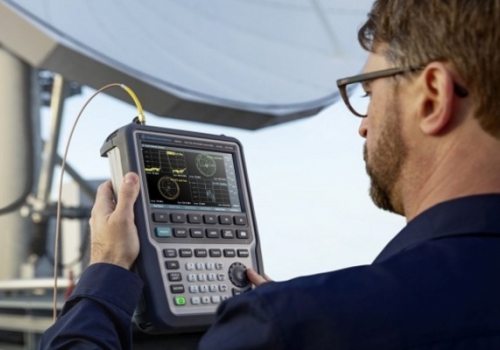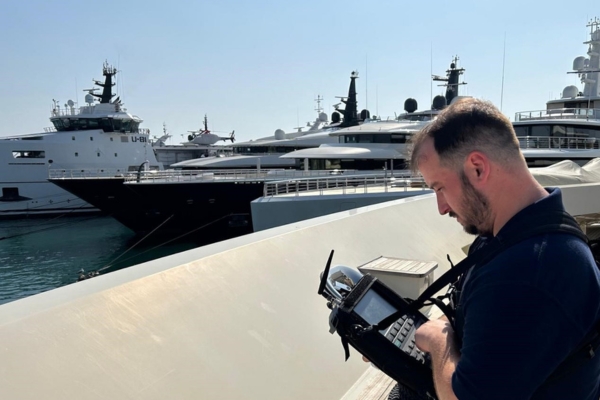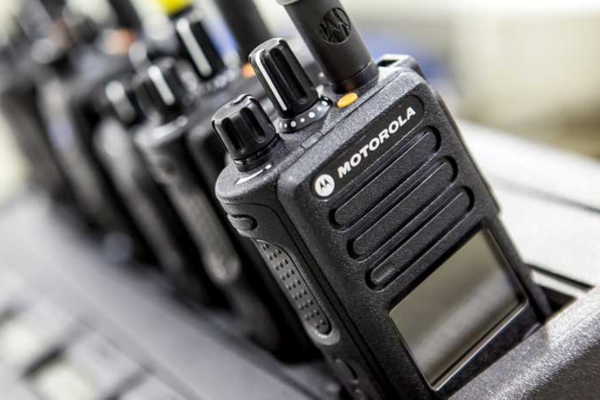Selecting an Expert Integrator for Yacht Crew Communications

In the domain of maritime operations where safety and efficiency are of paramount importance, the choice of integrator for UHF communication systems holds profound significance. Despite the annual influx of new vessels and yacht refits, regulatory guidance governing their communication equipment remains limited, underscoring the importance of selecting a proficient integrator.
Following the guidelines outlined in SOLAS Chapter II-2, Regulation 10.10.4 is essential. However, given the diverse applications of onboard UHF systems, it's crucial to delve deeper to determine the most suitable standards to adhere to.
This article looks at the key aspects of a high-quality UHF communication system installation, focusing on system planning, emphasising meticulous documentation, comprehensive cable testing, and signal mapping techniques.
System planning based on minimum signal strengths
System planning for UHF communication systems revolves around establishing minimum signal strengths even under watertight conditions. These thresholds serve as the foundation for designing the layout and configuration of the entire communication infrastructure, ensuring reliability across the vessel, even in adverse conditions. Integrators should analyse vessel layouts and operational needs to determine optimal antenna and equipment placement, considering factors like vessel size, materials, and potential interference sources. By aligning system planning with minimum signal strength requirements, comprehensive coverage is ensured.
Integrating minimum signal strength considerations into system planning also enhances overall reliability and performance, allowing proactive measures to address weak spots or signal degradation areas. This approach results in communications infrastructure meeting the highest standards of reliability and resilience, instilling confidence in seamless connectivity for crew and guests.
 Meticulous documentation
Meticulous documentation
At the core of every successful UHF communication system lies rigorous documentation. These comprehensive records serve as a roadmap from conception to execution, facilitating future maintenance and troubleshooting endeavours.
Detailed documentation, including system schematics, cable layouts, and equipment specifications, ensures the reliability and longevity of the communication infrastructure. It provides a clear understanding of the system's configuration, aiding in efficient troubleshooting and future upgrades.
Poor documentation can lead to costly changes during the vessel's lifetime. Without detailed records, maintenance and troubleshooting become challenging, potentially resulting in prolonged downtime and increased expenses. Equally, the fast-paced nature of the luxury marine industry can often result in high crew turnover. Crew knowledge transfer loss is mitigated by concrete documentation.
Comprehensive cable testing
The integrity of cables is indispensable for uninterrupted communication. A methodical approach to cable testing, facilitated by calibrated Radio Frequency (RF) test equipment, identifies and rectifies potential issues pre-emptively. Through standardised testing protocols during the installation phase, the communication backbone is verified, ensuring optimal signal transmission and minimal interference. Comprehensive cable testing is performed by Return Loss (RL) measurements and Distance To Fault (DTF).
These standards play a crucial role in cable testing and should be defined in the planning phase. RL measurements assess the amount of signal reflected from the cable, ensuring efficient signal transmission and minimal signal loss. DTF measurements help pinpoint the exact location of any cable faults, enabling swift repairs.
Heat mapping
Heat mapping techniques provide valuable insights into signal propagation, enabling precise antenna placement and configuration adjustments. This fine-tuning, grounded in empirical data, enhances communication reliability in challenging conditions. Heat mapping techniques visualize signal strength across the vessel, allowing integrators to optimize antenna placement and configuration to minimize dead zones and ensure consistent coverage throughout the vessel.
In the dynamic maritime environment, traditional methodologies may prove inadequate. RF heat mapping is essential in optimising communication system performance. By generating detailed heat maps of signal strength across the vessel, areas of signal attenuation or interference can be rectified before deployment. This ensures comprehensive coverage by providing a visual representation of signal strength distribution across the vessel.
RF heat mapping provides a baseline reference for signal distribution during commissioning. This baseline can be used for future health checks to monitor changes in signal strength over time. By comparing current heat maps to the initial baseline, integrators can quickly identify any deviations or degradation in signal quality, allowing for proactive maintenance and troubleshooting.
Enhancing safety and comfort
Integrators hold a crucial position in elevating safety protocols and enhancing the guest experience onboard. Through the integration of communication systems with safety features such as alarms and distress signals, emergency response capabilities are bolstered. Simultaneously, integration with guest services enhances the guest experience.
For all your vessel's UHF communication needs, you can trust in our expertise to deliver unparalleled reliability and peace of mind for your maritime operations. With structured planning, detailed documentation, and rigorous cable testing, we address poor RF performance by identifying and rectifying issues promptly. Our advanced signal mapping techniques further optimise performance, ensuring reliable communicationa for all aboard.
For further information please visit our website.



Post your comment
You cannot post comments until you have logged in.
Login to post a commentComments
No one has commented on this page yet.
RSS feed for comments on this page | RSS feed for all comments